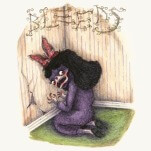Michael Cunningham Weaves Fairy Tales for a Mature Audience in A Wild Swan
Author Photo by Richard PhibbsIn his new book, A Wild Swan and Other Tales, Michael Cunningham delivers a deliciously refreshing spin on 11 fairy tales. The stories are a little more “adult,” a little more contemporary and far more creative. Subverting old stories has developed into something of a trend in recent years, but the Pulitzer Prize-winning author of The Hours confidently guides the tales into new territory while remaining reverential of the source material.
Paste caught up with Cunningham to discuss his childhood fascination with fairy tales, the lasting power of these stories and what follows “happily ever after.”
![]()
Paste: Do you think there’s a unique power to these old fairy tales?
Michael Cunningham: Absolutely. They are, in a sense, our American myths, don’t you think? “Myths” in that, for many of us, they’re the first stories we’re told as young children, and then, when we’re a bit older, what movies are we taken to see? Disney versions of some of the same fairy tales our parents have already read to us.
I can’t, of course, speak for others. I know not everyone’s childhood included fairy tales at bedtime, but I know as well that I’m one of many. These are not only the stories that helped form my imagination when it was in its most malleable form, they were also my first experience of narrative—of beginning, middle and end.
 Without fairy tales, child-life felt pretty random: play, get called in to dinner, fight with your parents at dinner over what you will and will not eat. Those are, of course, rich and essential experiences. They are what’s known as life itself. But (this may be particularly true of the rare kid who grows up to be a writer) the sense of cause and effect in the fairy tales, the feeling of suspense, of knowing that we were building toward a climax and then a resolution—that probably mattered to me at least as much as the fantasy did.
Without fairy tales, child-life felt pretty random: play, get called in to dinner, fight with your parents at dinner over what you will and will not eat. Those are, of course, rich and essential experiences. They are what’s known as life itself. But (this may be particularly true of the rare kid who grows up to be a writer) the sense of cause and effect in the fairy tales, the feeling of suspense, of knowing that we were building toward a climax and then a resolution—that probably mattered to me at least as much as the fantasy did.
Paste: What have stories like these taught you, both as a writer and as a person?
Cunningham:I suspect I’ve partially answered this question already. I’ve probably been most affected, as a writer and a person, by the stories that didn’t involve such clear morals.
Like, for instance, Hans Christian Anderson’s “The Girl Who Trod on a Loaf,” in which a vain little girl who’s bringing home a loaf of bread to her impoverished family uses the bread as a stepping stone to get across a mud puddle without spoiling her shoes, and is immediately snatched up by demons and taken to hell. I didn’t like that kind of finger-pointing story as a child, and I don’t much like them now, either.
Then, and now, I prefer the tales in which characters are caught up in some dilemma, often not of their own making, and then act either well or badly (yes, they act well, more often than not), but those stories, although they have moral dimensions, aren’t meant to “teach” anything overly specific to children, aren’t meant to “improve” them.
-

-

-

-

-

-

-

-

-

-

-

-

-

-

-

-

-

-

-

-

-

-

-

-

-

-

-

-

-

-

-

-

-

-

-

-

-

-

-

-








































